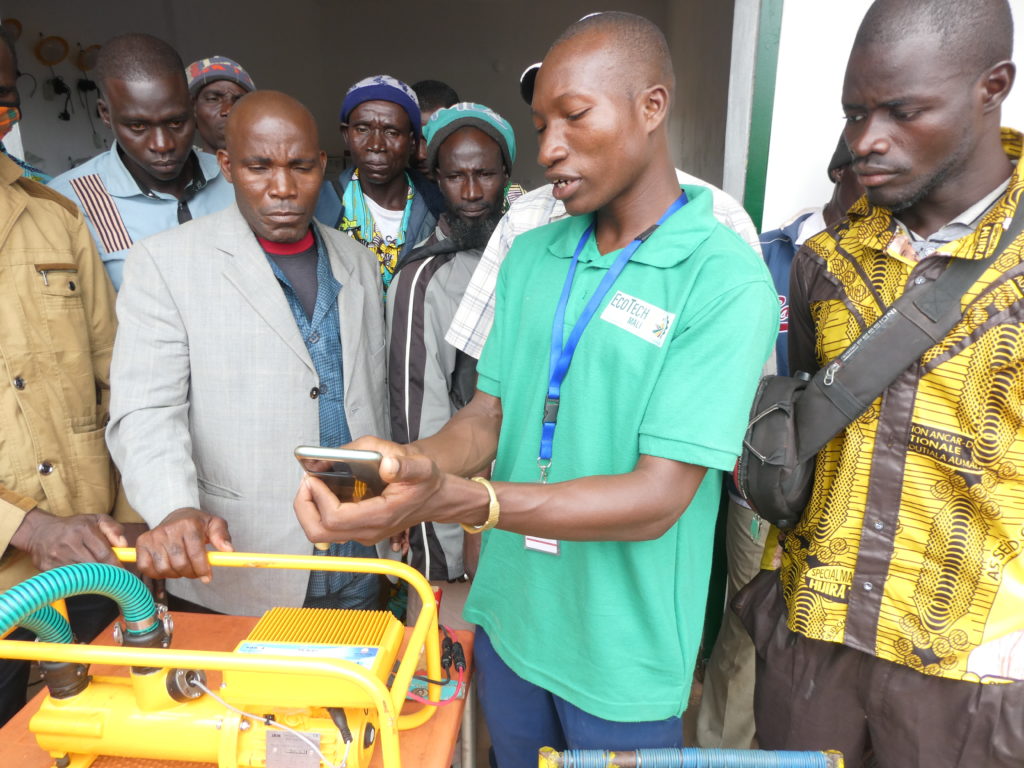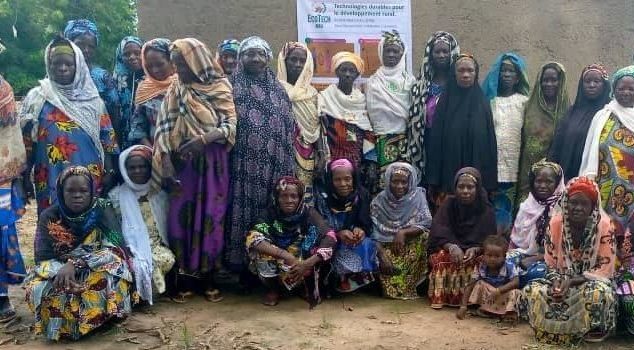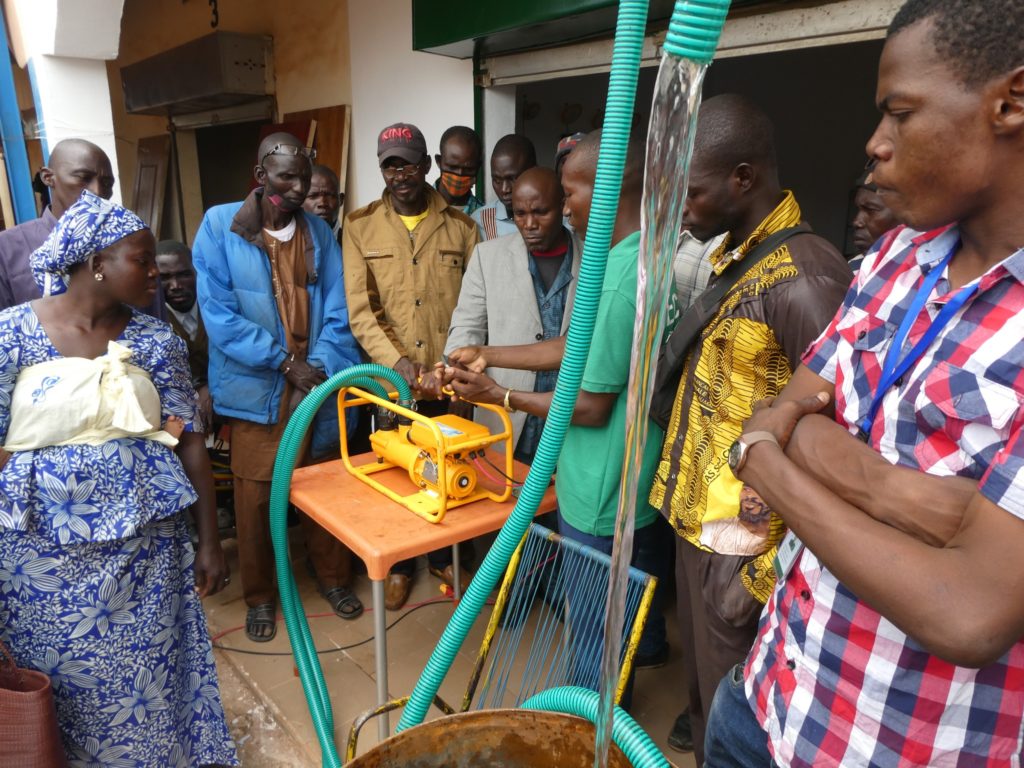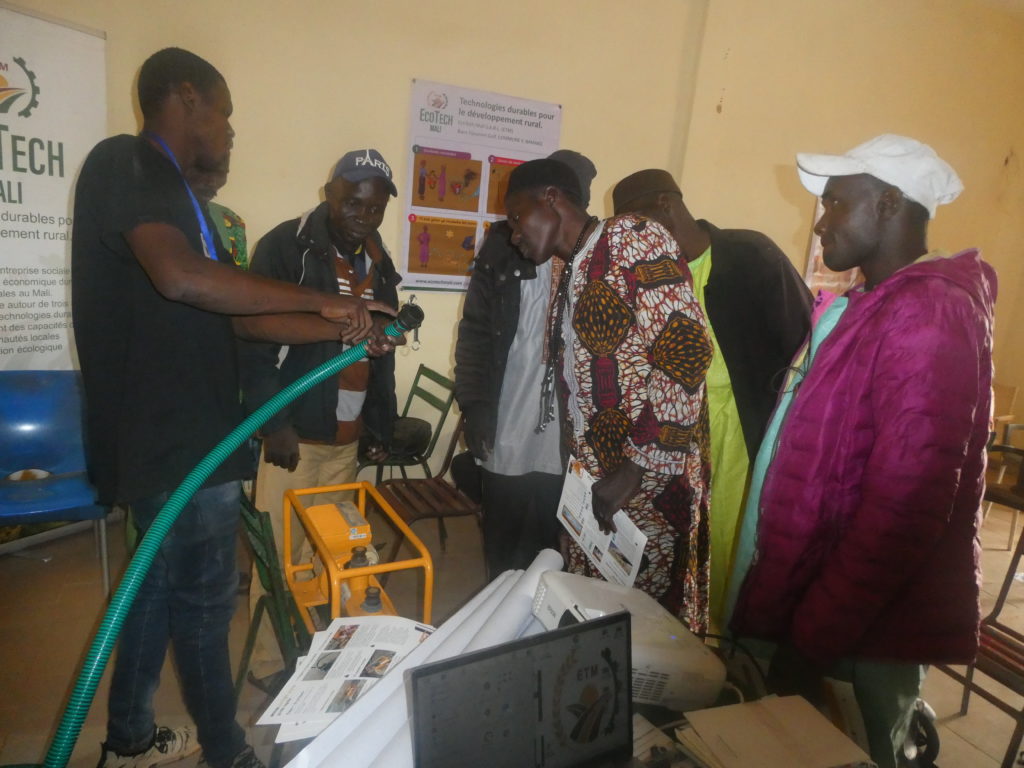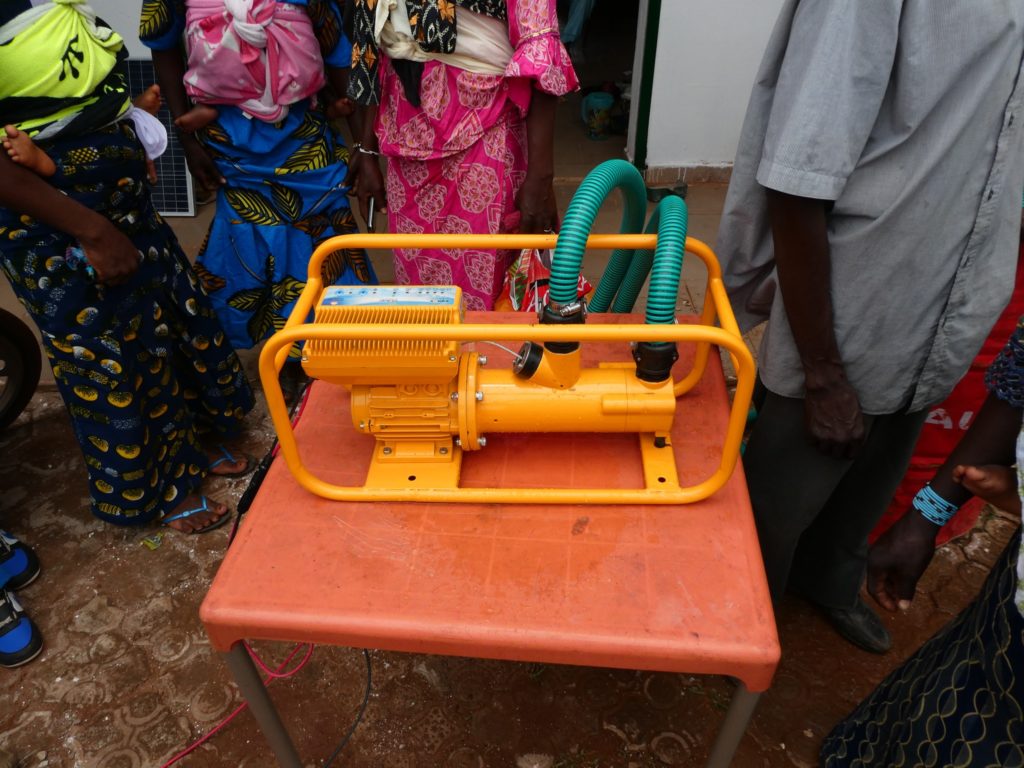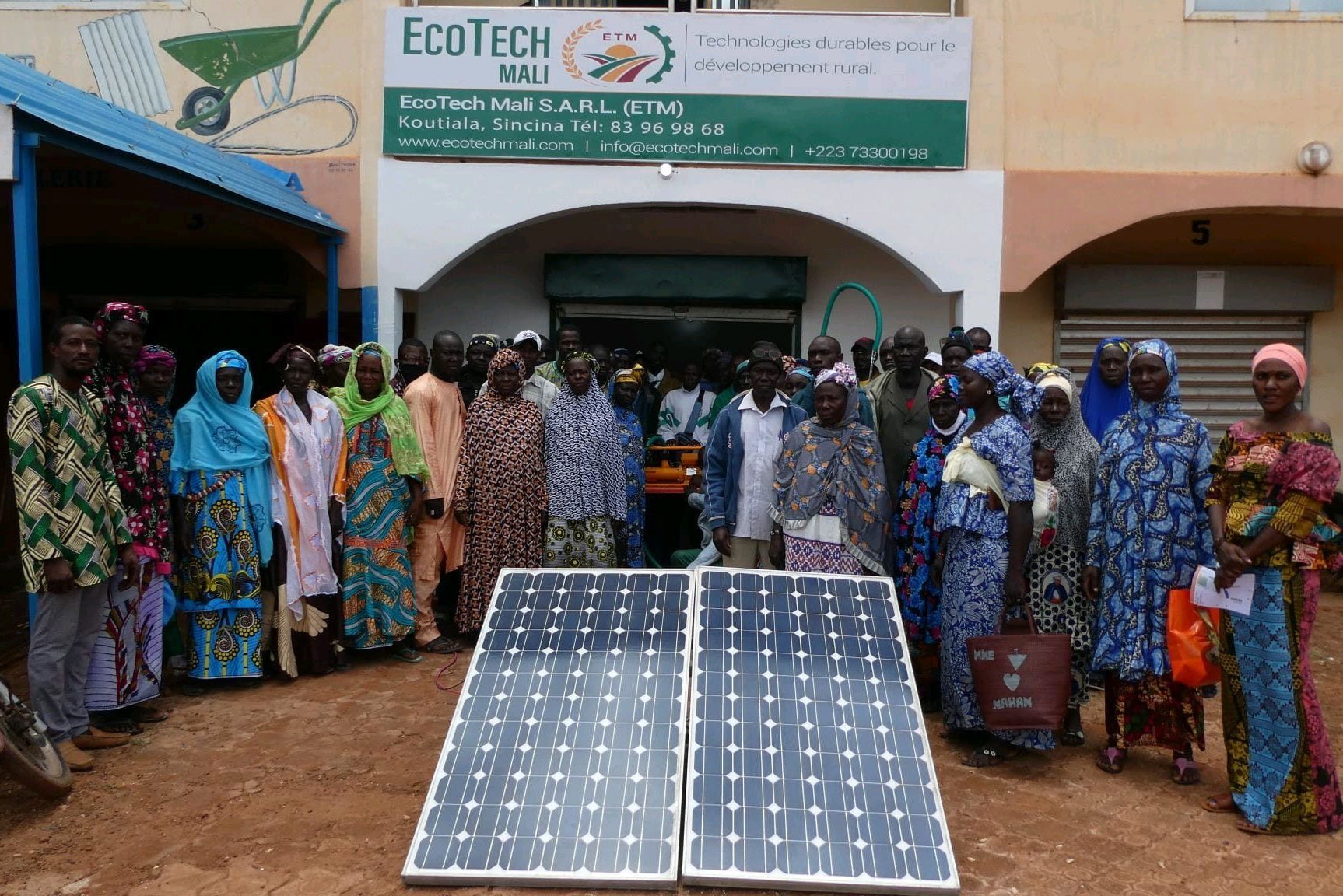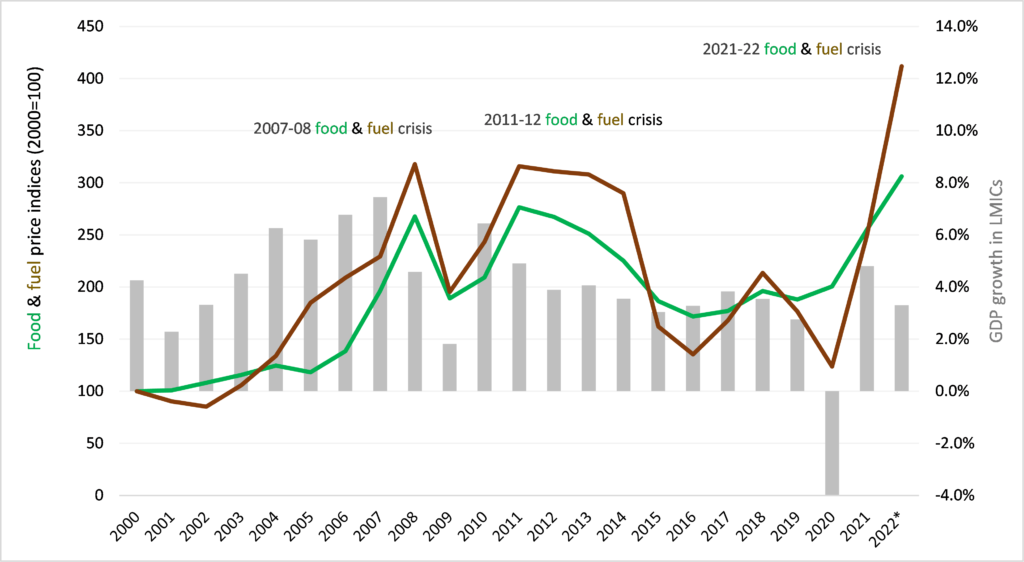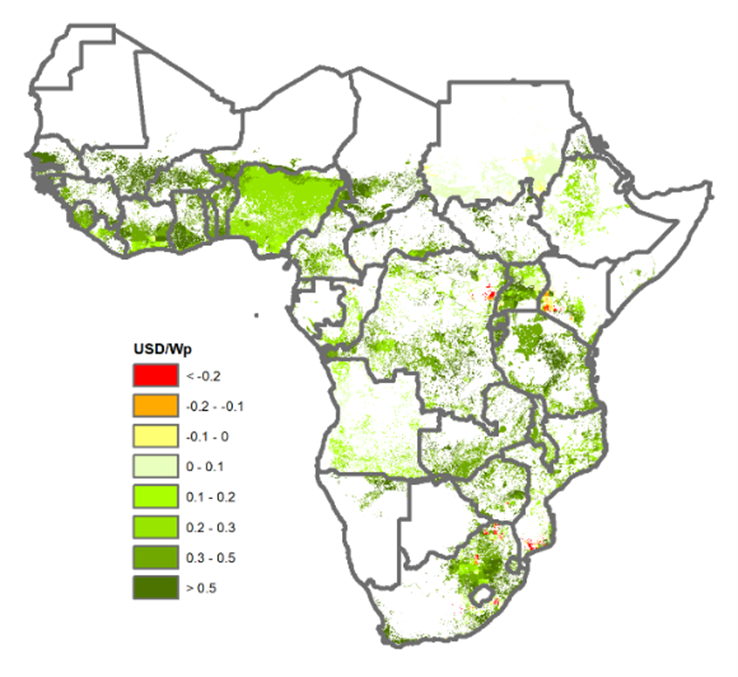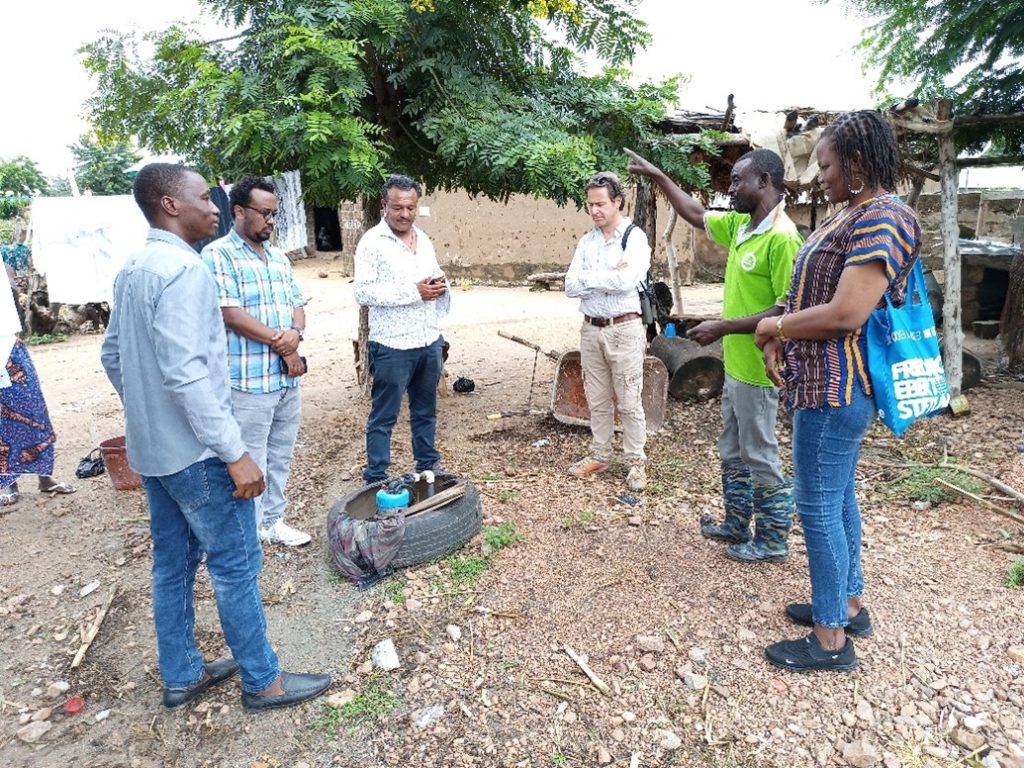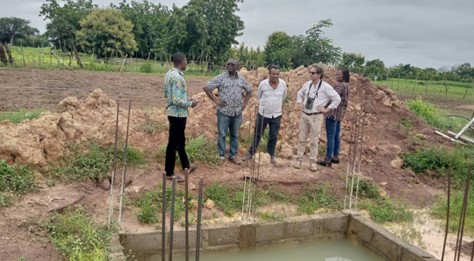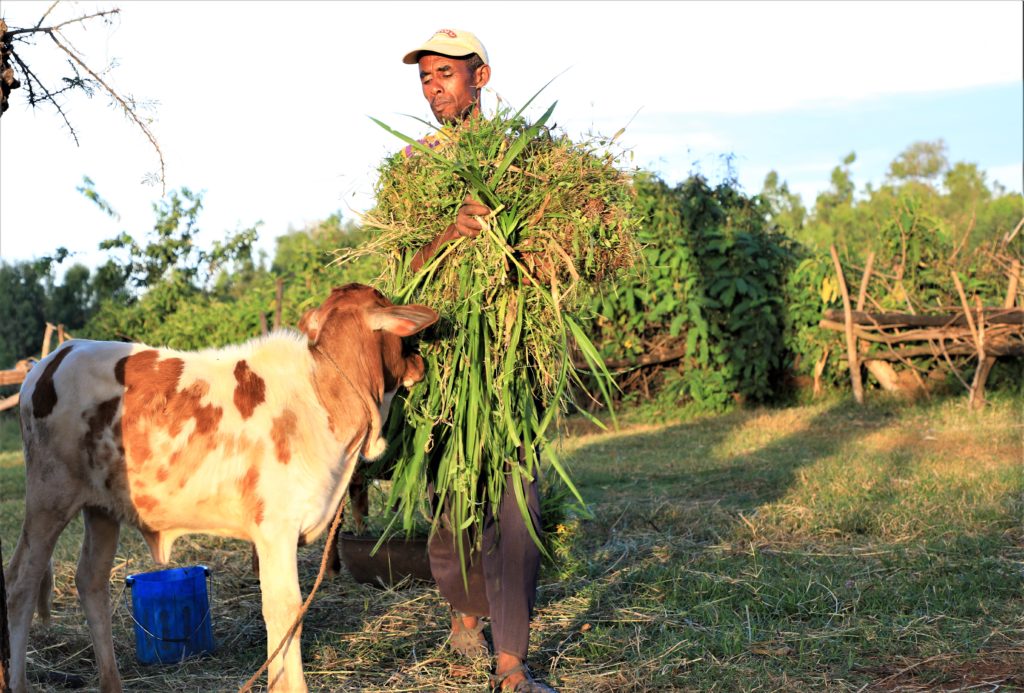In collaboration with the Innovation Lab for Small Scale Irrigation, last month, EcoTech Mali carried out an awareness campaign on the installation and use of solar pumps, as well as on irrigation and water retention techniques through workshops and demonstrations in 30 villages of 4 municipalities in the region of Koutiala.
Photos below show EcoTech Mali’s awareness campaign; photo credits ETM.
